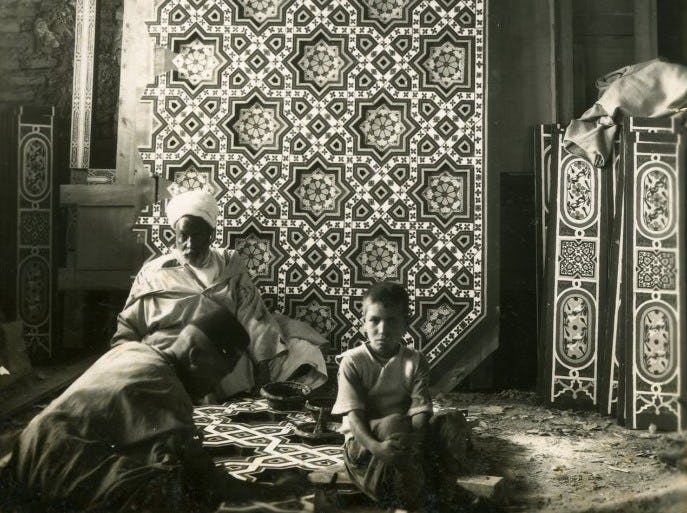Polychrome Cut-Mosaic Tile Panel (Copy of Masjid-i Shah Panel)
Date1938-1939
PeriodPahlavi
MediumCeramic, polychrome pigments
DimensionsOverall: 240 x 132 in. (609.6 x 335.3cm)
ClassificationsCeramics
Credit LineCourtesy of the Doris Duke Foundation for Islamic Art
Object number48.93
DescriptionThis monumental tile mosaic panel is prominently positioned in the Central Courtyard of Shangri La. Swirling, leafy tendrils intertwine across dark blue ground while turquoise cartouches radiate from a large, white medallion. These cartouches are inscribed with verses from the Quran (9:18). On the top center of the panel, a light green square has geometric kufic script reading, مبارك باد — “may it be blessed” in Persian. Teardrop-shaped cartouches in the top right and left read: “bounty is God’s”(نعمة الله) [right] and “might is God’s” (القدرة الله) [left]. This mosaic tile panel was custom-made in 1938–9 by craftsmen in Iran. The panel was based on a pair of panels that flank the entrance portal of Masjid-i Shah (the Shah’s mosque) in Isfahan, Iran. Masjid-i Shah was constructed in 1612 to around 1630 CE by the Safavid ruler and patron of the arts, Shah ‘Abbas I. The interior and exterior of the mosque is completely covered with mosaic tile, the signature style of Safavid architecture. During the twentieth century, Masjid-i Shah and other important buildings of Isfhahan were restored.
Creating a tile mosaic is an intricate process. Monochrome-glazed tile slabs are first fired and then cut into small pieces. The pieces are fitted together upside-down, and plaster is poured over them to form a solid, secure backing.
The recreated panel is very similar to the original with a few differences; two feet of the lower edge of the panels are missing, and there are slight color variations in the glazes.
On View
On viewCollections
18th - 19th century
16th - 17th century
















